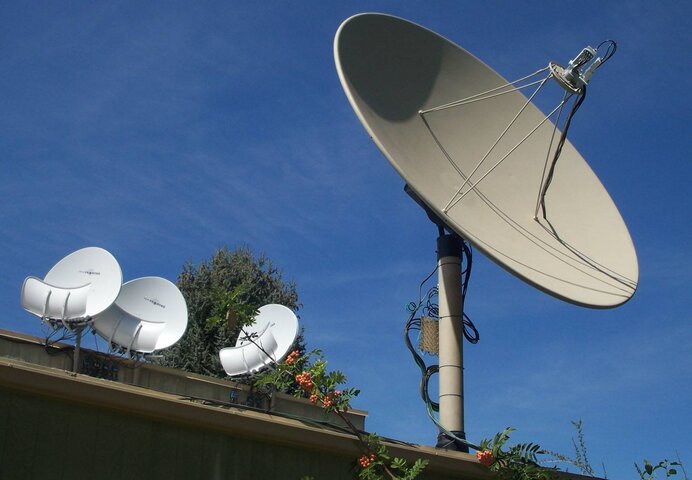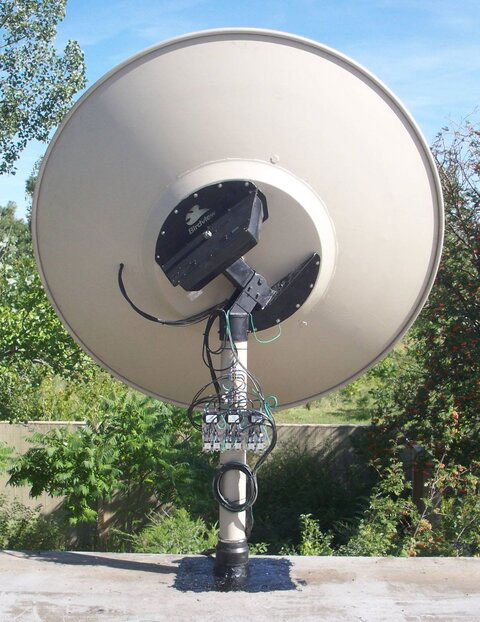Lone Cloud - I doubt you'll find much on the Internet about scalar theory, especially something that is correct. There are some highly technical books, but that may not what you are looking for.
turbosat - outfoxing may depend on one's perspective

I believe the city thought they had me boxed in with the ordinance they passed last year - grandfathered, but effectively frozen from making any changes since I have more than the allowed number of dishes under the new rules. I could have tried to get a variance, but I would have had to give the city a healthy escrow account and dealt with months of hearings. Probably not a lot of chance for success there. However I found a neat little clause from 1970 that allows ANY changes without city approval as long as the result is closer to compliance. I actually set up my spare 1.2m as a potential sacrificial lamb just before the ordinance passed. I really didn't need it and it only cost $30 for the pole. That paid off and it's back to being a backup dish. I could still put a 1m or less dish on the pole, but I can't think of any reason to do that at the moment.
In other news, the Birdview wiring is done and I did a thorough alignment this evening. I can see slight effects of a declination error at the extremes because the Birdview only has a fixed declination. If I can get more range on the motor angles I might do the washer trick to tweak this up.
The rotary encoder is working perfectly. I have 6771 counts from 43W to 139W, that works out to about 64 counts per motor angle degree (0.016 degrees per tick). No apparent backlash. On Ku this actually translates to better pointing accuracy as I can measure the difference with a 1-2 count offset. The Birdview has a laser mainlobe on Ku. My Birdview mount is very nice and can be adjusted with fine and repeatable accuracy. I found setting the elevation a cinch by myself, so I'm sorry but I won't be making any mods there for the time being.
I spent a LOT of time tweaking the focal point and the taper. At the moment my best overall setting has the front of the scalar rings 1.030m from the dish center and the dual ortho feed mouth projects 8mm in front of the scalar rings. This is within a couple of mm of my final estimates, and I tested over a range of +/- 5mm from the final setting. Both C and Ku perform best with this adjustment.
I was never happy with the dual ortho in the past as its Ku performance was generally horrible compared to theoretical. With all the planets aligned and some luck I could get it to perform within about 4 dB of theoretical, but most of the time it was more like 6-8 dB off. Its cross-polarization performance seemed particularly lousy. I'm not jumping up and down with joy, but with the Birdview I'm consistently getting around 3 dB from theoretical with none of the dreadful stuff. My 1.8m Prodelin offset still beats the 2.6m Birdview usually by 0.5 dB on Ku, but the Prodelin is a commercial-grade fibreglass dish. I'm actually fairly satisfied with the Birdview Ku performance so far, and I haven't had to go exotic, yet. It certainly outperforms the 1.2m I sacrificed.
I haven't done as much comparison on C-band. It performs fine, but nothing special. It's my third biggest dish and looks like it will stay in third place. Still, much better than the 1.8m Fortec it replaced on C and dramatically better on Ku.
I'm completely tied up tomorrow and probably will have to paint the house on Sunday. Pictures will come when I can find some spare time.





